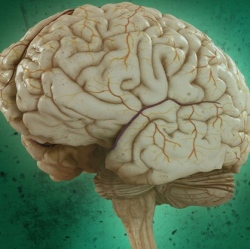
Brain computer interface (BCI) spellers allow a paralyzed patient to spell out words by looking at letters on a screen. Paralyzed patients can communicate by gazing at different letters to spell out a word. Currently, the most advanced systems for doing this use “steady state visually evoked potential” (SSVEP).
This method tags different characters on a screen by flashing each character at a different frequency (from 3.5 Hz to 75 Hz in one system). When a patient looks at a specific flashing character, the brain generates evoked electrical activity at the same (or multiples of) the specific frequency of the visual stimulus.
However, the low communication rate (low number of characters per minute) for existing SSVEP systems is a remaining obstacle to improving BCI-based communication. That’s because the tagged visual evoked potentials are difficult to detect due to interference from spontaneous EEG signals.
Researchers at Tsinghua University in China and State Key Laboratory Integrated Optoelectronics, Institute of Semiconductors (IOS), Chinese Academy of Sciences have now developed a significantly improved SSVEP system. It can achieve rates of about 60 characters (12 words) per minute (5.32 bits per second), a claimed new world record for BCI spellers, using either non-invasive or invasive methods.
To achieve that, the 40 characters in the stimulation matrix (used on the display) are tagged with a more sophisticated flickering frequency and phase coding scheme similar to that used in telecommunications systems, along with user-specific decoding. Real-time data analysis recognizes the target character through pre-processing, feature extraction, and classification.
The researchers suggest that the spelling speed achieved with this system (~1 character per second) seems close to the speed limit of human gaze control. The research was published in Proceedings of the National Academy of Sciences. It was supported by the Chinese National Basic Research Program, the National High-Tech R&D Program, the National Natural Science Foundation, and the Recruitment Program for Young Professionals.
